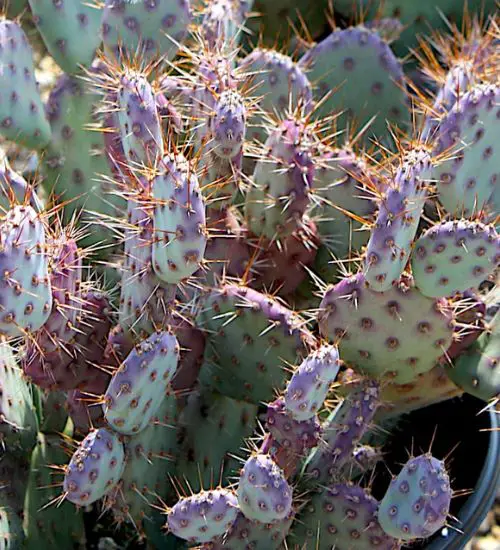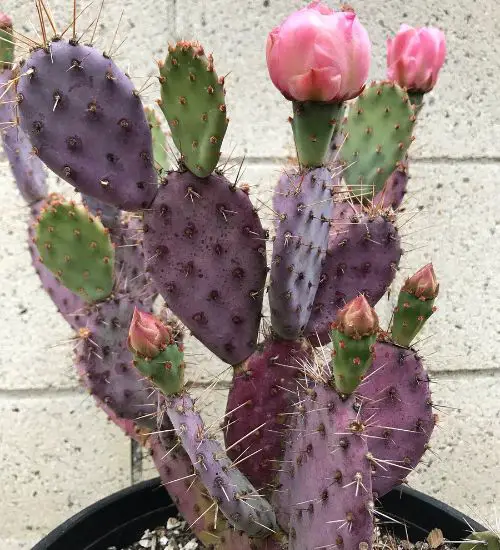Sun: Full sun to light shade
Water: Typical water needs for a succulent
Temperature: Zone 1a from -60° F to -55° F (-51.1 ° C to -48,3° C) to Zone 6b from -5° F to 0° F (-20.6 ° C to -17.8° C)
Winter Survival: Cold hardy
Propagation: stem cuttings, seeds
Flower: In the Spring
Flower Type: red-pink
Toxic: Generally non-toxic to humans and animals
Dormant: winter
Space Requirement: Indoors & Outdoors
Common Problems: Plants may rot if overwatered
Where to buy Opuntia ‘Baby Rita’?
Basc Care for Opuntia ‘Baby Rita’
Watering
Watering for Opuntia ‘Baby Rita’ is a simple task. It requires Typical water needs for a succulent.
What you need to remember is that this type of succulents needs to be watered for every 2 weeks
Fertilizing
Only feed this succulent during its active growing seasons which means winter. Use the right fertilizer applied in the right amounts. Applying half-strength balanced fertilizer every month or so is recommended for optimal results.
Do not fertilize during winter as the plant is dormant.
Sun & Location Requirements for "Prickly Pear."
Placing "Prickly Pear." in full sun to light shade is key for its growth and health. Look for a spot that gets around 6 hours of direct sunlight each day, but also offers plenty of shade during the hottest parts of the day.
As per this succulent profile, it is only able to stay healthy when the environment temperature is above the range of zone 1a from -60° F to -55° F (-51.1 ° C to -48,3° C).
Opuntia ‘Baby Rita’ is one of the most cold hardy succulents available, capable of surviving temperatures down to 0°F. Its thick leaves and stems help retain moisture in its cells and protect it from frigid winter weather. The succulent's attractive foliage adds a touch of cheerfulness to any cold-weather garden. "Prickly Pear." is an ideal choice for areas with freezing temperatures during the winter months.
Any succulents in the group will need a medium space to grow. You can place your pot at your table or window. Since this plant needs more space than mini succulents, you should consider do not plant them together with other succulents/plants.
Opuntia ‘Baby Rita’ also benefits from some indirect light throughout the day as well, so make sure you give it enough space to soak up light without becoming too exposed to heat.
Propagation
Propagating Opuntia ‘Baby Rita’ by stem cuttings is an easy and fun way to increase your collection of these unique houseplants. When propagating, it’s important to choose healthy stems from existing plants that are at least two inches long and have several leaves attached.
Propagating Opuntia ‘Baby Rita’ from seeds is a great way to produce new plants without relying on cuttings or divisions. It's important to look for healthy, dark and plump seeds that are slightly sticky when touched. The soil should be pre-mixed with well-draining potting mix, before evenly sowing the seeds and pressing them into the surface. To ensure successful germination, gentle misting of the soil should be done and placed in indirect light.
Toxicity

Opuntia ‘Baby Rita’ is not known to pose any significant health risks, as it is not considered to be toxic. However, it is best to keep the plant away from young children and pets, as they may ingest some of the parts of this plant that could contain toxins which can cause mild skin irritation.


